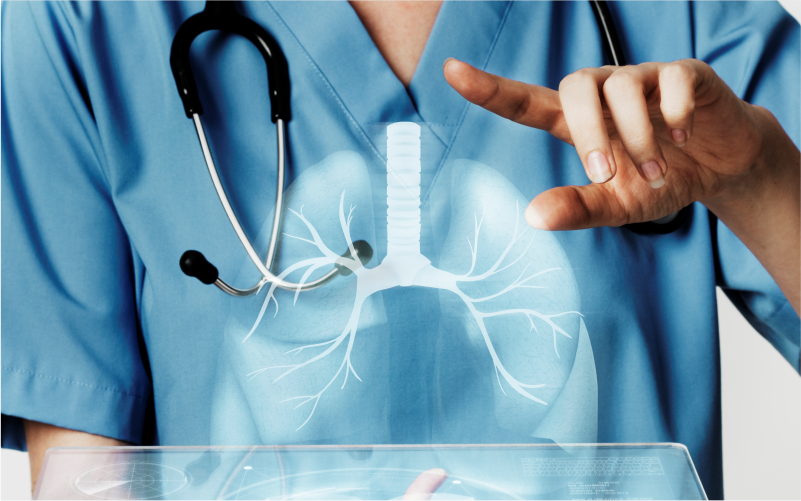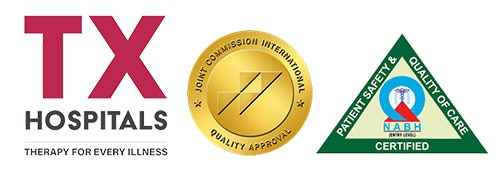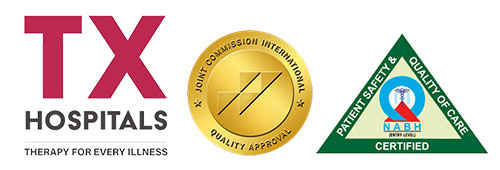Introduction
Lung cancer is a type of cancer that begins in the lungs. Your lungs are two spongy organs in your chest that take in oxygen when you inhale and release carbon dioxide when you exhale.
Lung cancer is the leading cause of cancer deaths worldwide.
People who smoke have the greatest risk of lung cancer, though lung cancer can also occur in people who have never smoked. The risk of lung cancer increases with the length of time and number of cigarettes you’ve smoked. If you quit smoking, even after smoking for many years, you can significantly reduce your chances of developing lung cancer.

Females also can have lung cancer predominantly adeno carcinoma
Adenocarcinoma is a type of cancer that arises from the glandular tissue in various organs of the body. It is the most common type of cancer that affects the glandular tissue. Adenocarcinomas can develop in various organs including the lungs, pancreas, prostate, colon, and breast. TX Hospitals, we have the best doctors to treat lung cancer
Lung Cancer Symptoms
Lung cancer typically doesn’t cause signs and symptoms in its earliest stages. Signs and symptoms of lung cancer typically occur when the disease is advanced.
Signs and symptoms of lung cancer may include:
- A new cough that doesn’t go away
- Coughing up blood, even a small amount
- Shortness of breath
- Chest pain
- Hoarseness
- Losing weight without trying
- Bone pain
- Headache
When to see a doctor
Make an appointment with your doctor if you have any persistent signs or symptoms that worry you. Visit TX Hospital provides the best treatment for Lung Cancer in hyderabad
If you smoke and have been unable to quit, make an appointment with your doctor. Your doctor can recommend strategies for quitting smoking, such as counseling, medications and nicotine replacement products.
Early screening of lung cancer
Early screening for lung cancer involves testing people who are at high risk for developing lung cancer before they have symptoms. The goal of early screening is to detect lung cancer at an early stage when it is more treatable and curable.
The primary method for early screening of lung cancer is a low-dose computed tomography (CT) scan. This test uses X-rays to create detailed images of the lungs and can help detect lung cancer at an early stage, before symptoms develop.
The American Cancer Society recommends low-dose CT screening for people who meet the following criteria:
- Adults aged 50 to 80 years
- A history of heavy smoking (defined as a smoking history of 30 pack-years or more, which means smoking one pack of cigarettes per day for 30 years, or two packs per day for 15 years)
- A current smoker or have quit smoking within the past 15 years
In addition to low-dose CT screening, there are other tests that can be used to screen for lung cancer. These tests include:
Sputum cytology: This test involves analyzing cells from the patient’s sputum (phlegm) under a microscope to look for cancer cells. However, this test is not very sensitive and may miss early stage lung cancers.
Chest X-ray: This test uses X-rays to create an image of the chest and can help detect abnormalities in the lungs. However, chest X-rays are not as sensitive as low-dose CT scans and may miss early-stage lung cancers.
Blood tests: There are several blood tests that can be used to screen for lung cancer, but none of these tests are currently recommended for routine screening. These tests are not as sensitive as low-dose CT scans and may produce false-positive results.
Overall, low-dose CT screening is the most effective method for early screening of lung cancer in high-risk individuals. However, it is important to discuss the potential risks and benefits of screening with your healthcare provider to determine if it is appropriate for you.
Treatment for lung cancer
Treatments for lung cancer are designed to get rid of cancer in your body or slow down its growth. Treatments can remove cancerous cells, help to destroy them or keep them from multiplying or teach your immune system to fight them. Some therapies are also used to reduce symptoms and relieve pain. Your treatment will depend on the type of lung cancer you have, where it is, how far it’s spread and many other factors.
What medications / treatments are used in lung cancer?
Lung cancer treatments include surgery, radiofrequency ablation, radiation therapy, chemotherapy, targeted drug therapy and immunotherapy.
Surgery
NSCLC that hasn’t spread and SCLC that’s limited to a single tumor can be eligible for surgery. Your surgeon might remove the tumor and a small amount of healthy tissue around it to make sure they don’t leave any cancer cells behind. Sometimes they have to remove all or part of your lung (resection) for the best chance that the cancer won’t come back.
Radiofrequency ablation
NSCLC tumors near the outer edges of your lungs are sometimes treated with radiofrequency ablation (RFA). RFA uses high-energy radio waves to heat and destroy cancer cells.
Radiation therapy
Radiation uses high energy beams to kill cancer cells. It can be used by itself or to help make surgery more effective. Radiation can also be used as palliative care, to shrink tumors and relieve pain. It’s used in both NSCLC and SCLC.
Chemotherapy
Chemotherapy is often a combination of multiple medications designed to stop cancer cells from growing. It can be given before or after surgery or in combination with other types of medication, like immunotherapy. Chemotherapy for lung cancer is usually given through an IV.
Targeted drug therapy
In some people with NSCLC, lung cancer cells have specific changes (mutations) that help the cancer grow. Special drugs target these mutations to try to slow down or destroy cancer cells. Other drugs, called angiogenesis inhibitors, can keep the tumor from creating new blood vessels, which the cancer cells need to grow.
Immunotherapy
Our bodies usually recognize cells that are damaged or harmful and destroy them. Cancer has ways to hide from the immune system to keep from being destroyed. Immunotherapy reveals cancer cells to your immune system so your own body can fight cancer.
Treatments to ease symptoms (palliative care)
Some lung cancer treatments are used to relieve symptoms, like pain and difficulty breathing. These include therapies to reduce or remove tumors that are blocking airways, and procedures to remove fluid from around your lungs and keep it from coming back.
Side effects of the treatment
Side effects of lung cancer treatment depend on the type of treatment. Your provider can tell you what side effects to expect, and what complications to look out for, for your specific treatment.







